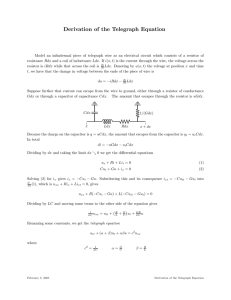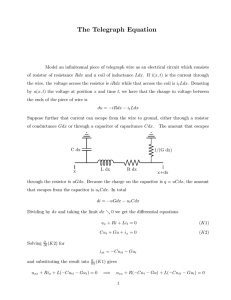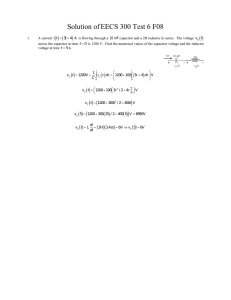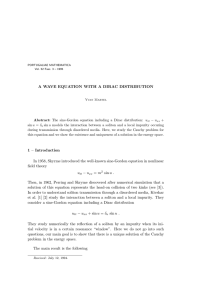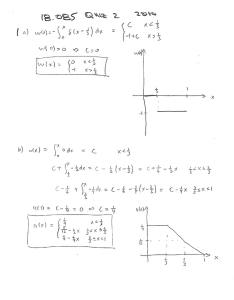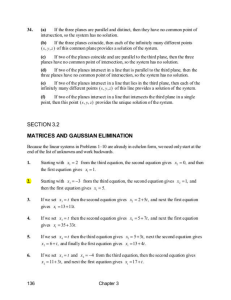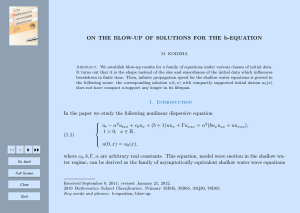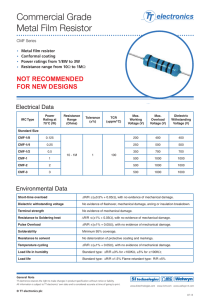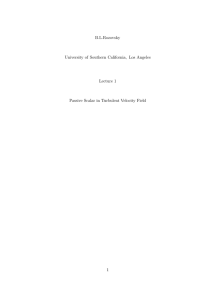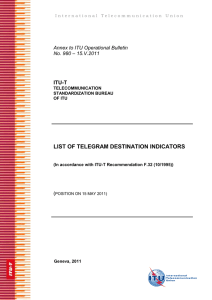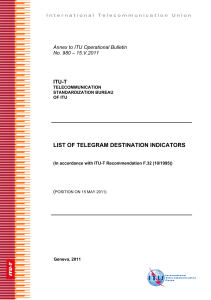Derivation of the Telegraph Equation
advertisement
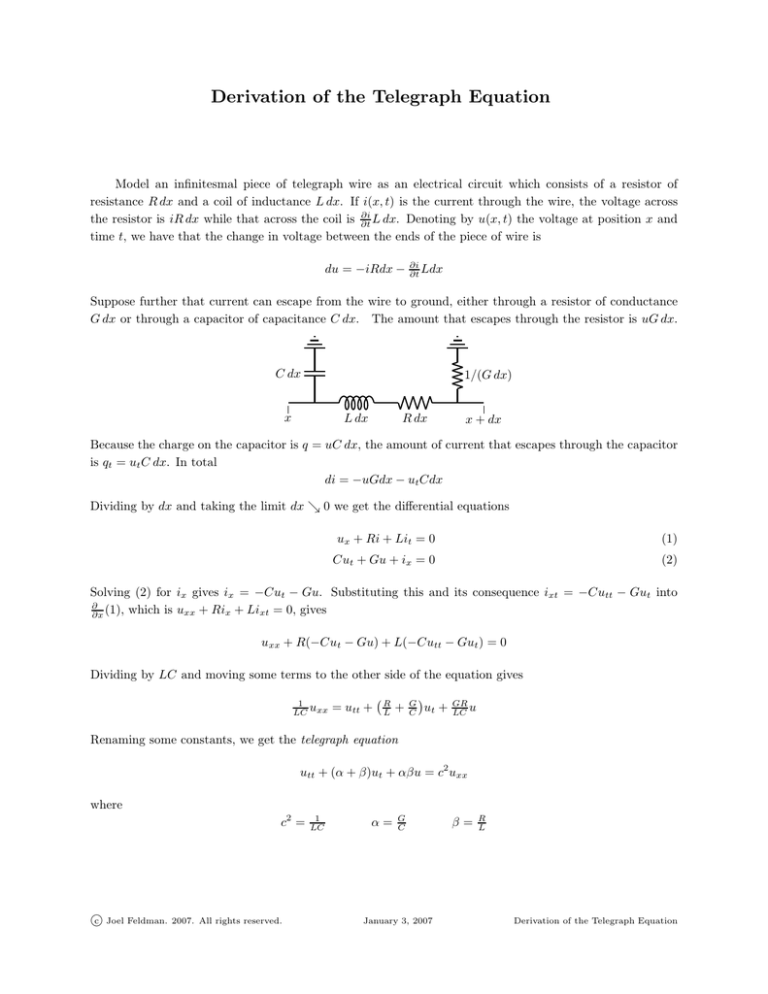
Derivation of the Telegraph Equation Model an infinitesmal piece of telegraph wire as an electrical circuit which consists of a resistor of resistance R dx and a coil of inductance L dx. If i(x, t) is the current through the wire, the voltage across ∂i the resistor is iR dx while that across the coil is ∂t L dx. Denoting by u(x, t) the voltage at position x and time t, we have that the change in voltage between the ends of the piece of wire is du = −iRdx − ∂i ∂t Ldx Suppose further that current can escape from the wire to ground, either through a resistor of conductance G dx or through a capacitor of capacitance C dx. The amount that escapes through the resistor is uG dx. C dx 1/(G dx) x L dx R dx x + dx Because the charge on the capacitor is q = uC dx, the amount of current that escapes through the capacitor is qt = ut C dx. In total di = −uGdx − ut Cdx Dividing by dx and taking the limit dx ց 0 we get the differential equations ux + Ri + Lit = 0 (1) Cut + Gu + ix = 0 (2) Solving (2) for ix gives ix = −Cut − Gu. Substituting this and its consequence ixt = −Cutt − Gut into ∂ ∂x (1), which is uxx + Rix + Lixt = 0, gives uxx + R(−Cut − Gu) + L(−Cutt − Gut ) = 0 Dividing by LC and moving some terms to the other side of the equation gives 1 LC uxx = utt + R L + G C ut + GR LC u Renaming some constants, we get the telegraph equation utt + (α + β)ut + αβu = c2 uxx where c2 = c Joel Feldman. 2007. All rights reserved. 1 LC α= G C January 3, 2007 β= R L Derivation of the Telegraph Equation
